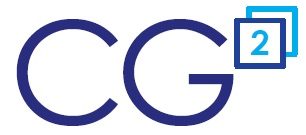Let’s start by first defining the copy-promotion feature. The foundation of every trade promotion management solution is the promotion. The primary data elements for a CG manufacturer's trade promotion event are the following:
Who? Who gets the discount or allowance?
When? What dates are the discounts and allowances valid?
What? What products are discounted?
How much? How much extra do you expect to sell because of the promotion?
Why? What merchandizing are you purchasing or expecting at retail with these discounts?
Definition: The copy-promotion feature duplicates all of a promotion’s data attributes, and allows the user to modify one or more attributes to create a new and unique trade promotion.
| Common uses of the copy-promotion feature | Examples |
| Copy a promotion and change the dates. | March promotion copied to May |
| Copy a promotion and change the customer. | Event copied from one Kroger KMA to another. |
| Copy ALL promotions from last year to next year. | Copy all of last year’s Publix promotions to next year. |
Why the copy-promotion feature is loved by many:
The time-saving feature is obvious. All those details in a typical trade promotion take time to enter and review. Think of the time saved by just copying one promotion!
Let’s do the math. If it takes 10 minutes to thoughtfully create an individual promotion from scratch, then running the same promotion 6 times a year will take 60 minutes. (That’s 10 minutes times 6.) If copying the first deal and changing the dates takes a minute or less, then the same 6 promotions require only 15 minutes. That’s a savings of 45 minutes in your busy day. Wow!
Now let’s extend this math to the annual planning process. What if you mange 5 customers, each with 20 events? If 80% of the promotions from last year are valid and should to be run again, then copying last year’s promotions to next year to create 80 promotions will save you about two days of work. Double wow!
Clearly, the copy-promotion feature is loved by anyone tasked with creating trade promotions.
Why is the copy-promotion feature despised?
The same reason people love the copy-promotion feature, is the same reason some despise it. The copy-promotion makes it easy and fast to create promotions. Those against the copy-promotion feature argue that it’s TOO easy. So what’s not to like about fast and easy?
- Trade Promotion spending is highly visible, and often the second largest expense on a brand’s P&L.
- With declining profit margins and pressure to deliver profit to the shareholders, trade promotion is often the difference between hitting or missing the corporate revenue and profitability goals.
- Because each promotion is a financial commitment, management expects the promotion planner to carefully plan every trade promotion event.
- Management is of the belief that running the same identical promotions every year can’t deliver the best results to the brand and company.
- Copying deals from one customer to another can create errors:
- Lump sums for merchandizing are not the same.
- Different items may be in distribution, so the promotion may include items that are not relevant, or exclude items that should be on the promotion.
- Copying deals from one time period to another can create errors:
- Promotional lift can be significantly different by month in seasonal categories
- Competitive deals, holidays, and marketing overlays may require different allowances and merchandizing tactics to generate the best results.
- Cost-of-goods may be dramatically different during peak demand periods, reducing the promotion’s profitability.
These financial realities and concerns appear to negate all of the benefits of the copy-promotion feature. So why do all TPM software solutions have this loved yet despised feature?
The copy-promotion compromise:
One of the ways TPM solutions return value to manufacturers is by freeing users from the tedium of managing trade promotion. This allows users to focus their effort on the activities that provide value to the organization.
Let’s take the example of the promotion run 6 times a year. Instead of taking 10 minutes to create each of the 6 promotions, the user can take extra time to think through, analyze and what-if the first promotion. Even if the user spends twice as much time creating the first promotion, the user can still create all 6 promotions in less time than creating 6 promotions from scratch. With the time savings, the user still has time to review each of the 5 copied promotions and ‘tweak’ them as necessary. The end result is less 'grunt' work for the planner, and promotions that generate better results.
Management also knows that a TPM solution’s workflow is designed to identify poorly conceived trade promotions, like those that may have been hastily copied. Promotions must be approved before they become official promotions.
In summary, here are two simple recommendations for those that use the copy-promotion feature in your TPM software solution:
- Be extra careful if you copy a promotion from one customer to another!
- Take time to review ALL copied promotions!
Alex Ring
President
CG Squared, Inc.
